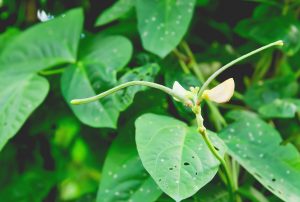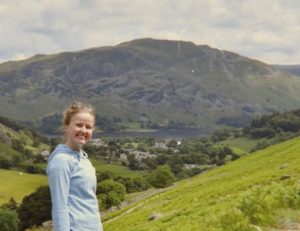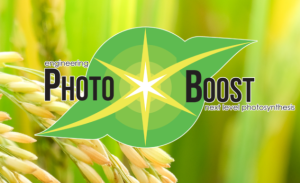A big Lancaster welcome to Joana Amaral who started today with the team as part of the EU funded CAPITALISE project.
Joana will be working on improving photosynthesis and productivity in barley, maize, and tomato.

Photosynthesis Research at the Lancaster Environment Centre
A big Lancaster welcome to Joana Amaral who started today with the team as part of the EU funded CAPITALISE project.
Joana will be working on improving photosynthesis and productivity in barley, maize, and tomato.

Congratulations to former Masters student, now PhD student Louis, whose work on homoeolog expression in hexaploid wheat has just been published in Photosynthesis Research!
Louis did a great job shifting from a planned lab-based project to a primarily in silico project, and it was an impressive feat to adapt to this change, and get this work all the way to publication.
Congratulations to members of the team working on the RIPE project, who have today published in Nature Plants on how Rubisco deactivation limits cowpea productivity.
This has been a big undertaking by the team, led by Sam and Elizabete. Well done!
You can see the news article here and a direct link to the paper here.


This week we have a blog piece from Alice Robijns on her time with us at Lancaster working on RIPE & Rubisco.
After a very productive year, she’s just recently joined Wanne Kromdijk and his group to do a PhD on C4 photosynthesis.
In a year which was characterised by coming in and out of COVID-19 lockdowns, I felt extremely lucky that I was able to join the photosynthesis group in Lancaster, and work on a subject I am passionate about.
Rubisco is such an exciting part of photosynthesis to look at: as the central enzyme, it links up the light-dependent and light-independent reactions. Despite this, there is still a lot we don’t know about Rubisco, and being able to work with the team in Lancaster, many of whom have worked on Rubisco for a long time, was so valuable for my understanding and development. Most of my lab work focused on using molecular biology to develop new tools to help us dive deeper into Rubisco biochemistry. If I’ve learnt anything about science the last couple of years, is that nothing is quite as simple as the protocol will tell you, especially for cloning. Doug helpfully described it as ‘voodoo’ when I was complaining about my PCRs not working without apparent reason… While this was frustrating at times, it was also immensely satisfying when things did finally work. It was a new experience for me to feel so independent and competent in the lab, and even being someone that other people asked for advice!
I also was reminded this year of how creative working in science is. When one of my synthesised genes didn’t arrive for a while due to COVID and Brexit-related delays, I was able to do some computational analyses of DNA and protein sequences and reviewing past literature on Rubisco regulation. I really enjoyed this opportunity to develop my scientific thinking and analysis.
Of course, the biggest reason I had such an enjoyable time was because I felt so welcomed by everyone there, despite social distancing and having to wear a mask. Days in the lab were characterised by conversations about home-schooling, adventures in the Lake District and radio on Fridays. Outside of work, I had a great time exploring the areas around Lancaster, particularly the Lake District and going for swims in Morecambe Bay. I adopted a swiss cheese plant with a friend who we named Wallace.
Now, I have started my PhD at Cambridge University, working on photoprotection in C4 plants, and my first lab work to do is golden gate cloning! I had a really great time in Lancaster: I learnt a huge amount, came to be fascinated about Rubisco and how it works, and made the most of a year that only a few months before had seemed very unsure. Lastly, I want to say a huge thank you to everyone in the lab, especially Elizabete who gave me the position and Rhiannon, Mike and Doug who supported me with my experiments.

A big thanks from the Lancaster photosynthesis team for all your contributions Alice, and best wishes for your PhD studies!
A warm Lancaster welcome to Supreeta Vijayakumar who joined the team this week as a Senior Research Associate in Metabolic Modeling.
Supreeta has joined the team from Teeside University to work on the PhotoBoost project!
She’ll be working on modelling to help improve photosynthesis and productivity in the vital C3 crops rice and potato.

Why are there so few C2 grasses?
Your PhD could be to find the answer to this!
Through the Envision DTP program, there is a newly advertised PhD position to work with Marjorie Lundgren, as well Elizabete Carmo-Silva and a great group of external collaborators.
Interested and have questions? You can find contacts for Marjorie and links to apply via this link.
We are recruiting another postdoc to work with us and a great group of collaborators on the EU Horizon 2020 project CAPITALISE!
You’ll get to join the team of Prof Elizabete Carmo-Silva and wider Lancaster Photosynthesis team, as well as the Plant and Crop Sciences group at the Lancaster Environment Centre.
This role will contribute to efforts to characterise natural variation in photosynthetic traits to improve photosynthetic efficiency in barley, tomato and maize.
Full information for this Plant Molecular Biology role can be found here.
Please carefully read the details at the linked Lancaster Jobs portal pages, informal enquiries can be sent via email, but all applications must be submitted through the portal for consideration. Applications close Tuesday 12th October.
Update 27 Aug: A couple of people have asked, so to clarify, yes these jobs are available to anyone, not just UK based people.
If you will need a work visa for the UK that is perfectly fine.

We are recruiting *2* postdocs to work with us and collaborators on the EU Horizon 2020 project PhotoBoost!
You’ll get to join the team of Prof Elizabete Carmo-Silva and wider Lancaster Photosynthesis team, as well as the Plant and Crop Sciences group at the Lancaster Environment Centre.
These roles are both for 42 months initially, and will contribute to efforts to improve the productivity and sustainability of two essential C3 crops: rice and potatoes. PhotoBoost involves a large number of international partners, and at Lancaster involves Profs Elizabete Carmo-Silva, Steve Long, and Martin Parry.
Full information for the Metabolic Modelling role can be found here.
And for the Metabolic Engineering role here.
Please carefully read the details at the linked Lancaster Jobs portal pages, informal enquiries can be sent via email, but all applications must be submitted through the portal for consideration. Applications for both positions close Monday 20th September.
Update 27 Aug: A couple of people have asked, so to clarify, yes these jobs are available to anyone, not just UK based people.
If you will need a work visa for the UK that is perfectly fine.
Massive congratulations to newly minted Professor Elizabete Carmo-Silva, and new Senior Research Fellow Marjorie Lundgren!
Very well deserved and well earned promotions both! Keep up the excellent work.
You can learn more about Elizabetes work here, and about Marjs work here.
Keep an eye on this page/twitter as we’ll have a number of postdoc opportunities appearing this week!
By Juan Alejandro Perdomo, Lancaster Photosynthesis group postdoc.
“The relative abundance of wheat Rubisco activase isoforms is post-transcriptionally regulated.”
Perdomo, Buchner & Carmo-Silva, Photosynthesis Research (Paper link.)
Rubisco, the most abundant enzyme in plants, and its chaperone Rubisco activase (Rca) are key enzymes for photosynthesis. We wanted to get a better understanding of how much the expression and amount of these photosynthetic proteins vary during the day.
To obtain data over a suitable timescale to show how Rubisco and Rca varies in accordance with the daily cycle, and I slept outside the growth chambers for two days. We’ve learnt a number of interesting things from these results.
We found that alongside the different regulatory properties of each of the three Rca isoforms in wheat, each of them also shows different daily patterns. TaRca1-β expression was almost null during the whole daily cycle. The redox-sensitive TaRca-α isoform was less abundant, representing 85% of the redox-insensitive TaRca2-β at the transcript level and 12.5% at the protein level. Therefore, our results show that in wheat plants TaRca2-β is the isoform with the highest expression and amount. These changes in Rca isoform abundance and ratio are imperative since the three wheat Rca isoforms activate Rubisco at different rates and differ in their sensitivity to temperature and changes in the ADP/ATP ratio.
We found that Rubisco amounts are pretty constant during the daytime. However, its abundance dropped by 20% by the middle of the night. Could this be due to a high Rubisco degradation during the night, which represents a big nitrogen sink for wheat plants? We don’t yet know, but our data is an interesting note to explore further in the future.
On the other hand, gene expression and protein amount did not correlate for Rubisco or any of the Rca isoforms during the daily cycle. This outcome suggests that the abundance of both enzymes and their isoforms is post-transcriptionally regulated, and that for these proteins transcript levels are insufficient to predict functional protein levels. Though we have seen evidence of temperature impacts on transcription and subsequent protein amounts for the more thermally stable TaRca1-β isoform.
This was an interesting experiment to do to better understand how the expression of the different isoforms of this key regulator of photosynthesis behaves during the day (even if it meant some long nights sampling!). As we gain more and more understanding of both the expression and biochemical variability of wheat Rubisco activase isoforms, it gives us further knowledge to apply to improving the efficiency of photosynthesis, and improving wheat production for more sustainable, secure food production.
© 2024 Making the most of sunshine
Theme by Anders Noren — Up ↑
You must be logged in to post a comment.